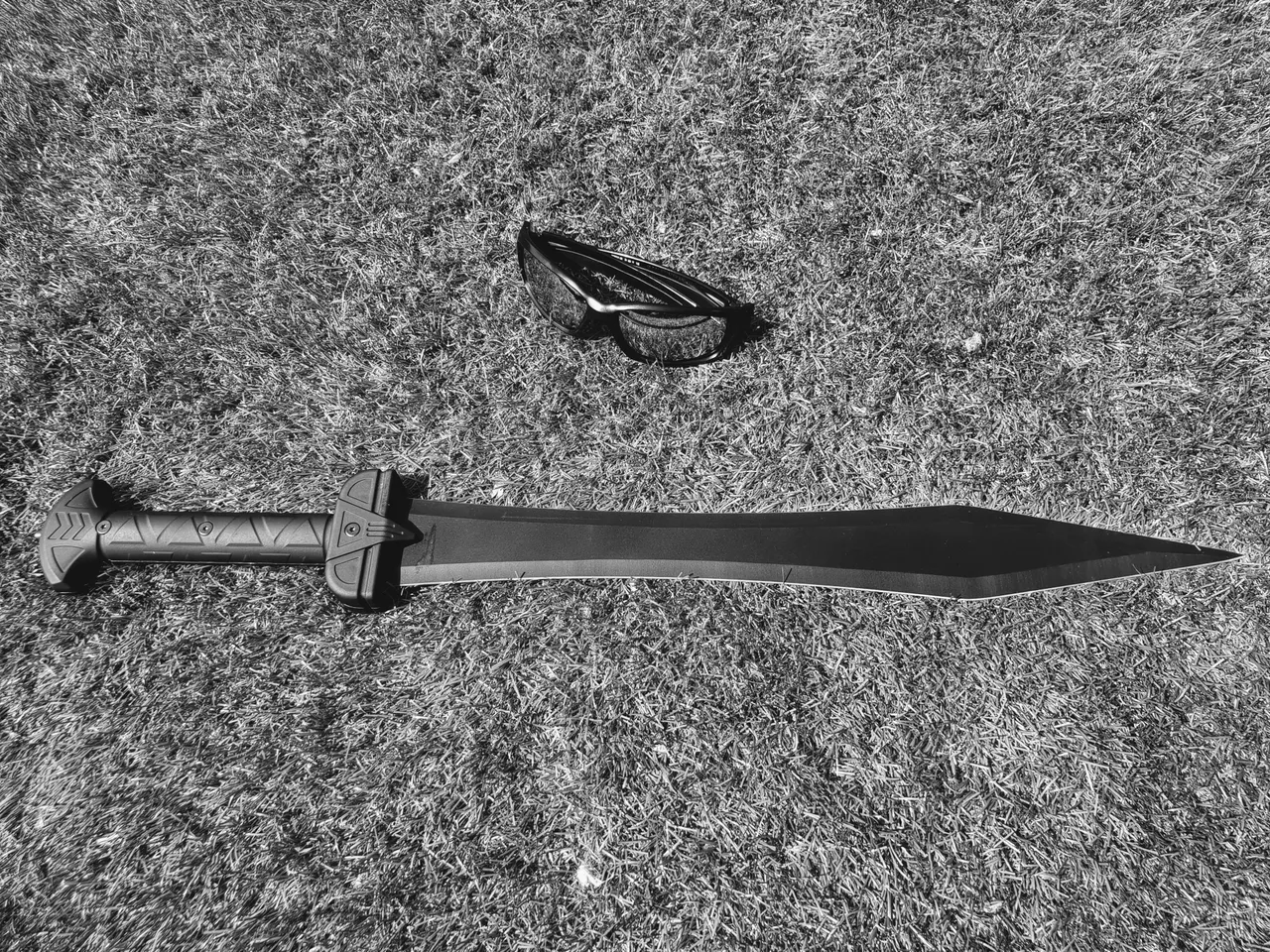The Roman Empire can be attributed for many excellent inventions like modern plumbing and sanitary solutions, arch-building, surgical tools, aqueducts, concrete, road-paving and many many others...Oh, Roman numerals too, which we still use today!
I've been to many Roman ruins including the Roman baths in Bath UK and what they achieved is nothing short of miraculous; They were a bunch of very industrious and inventive people and a trip to Rome or other extensive Roman site will punctuate that point quite clearly.
The Roman Empire was built on conquest. They would come along, offer the chance for locals to submit to their rule and prosper through trade and commerce, and if inhabitants of said place decided against that, they'd simply slaughter some people until they changed their minds. They were good at it too

The Roman foot-soldier was an effective weapon and pivotal to the Empire's military success, especially when used in combination with other elements of the military - They were highly trained and equipped with some incredibly useful tactics and weapons...One of which is the gladius.
A gladius, Latin for sword, is...A sword. It was used in conjunction with other weapon-systems in hand to hand combat and made the Roman legionary a potent little fellow.
Essentially, the legionary would carry a shield (scutum), a javelin (pila) or two and a gladius; Some carried a dagger also, called a pugio. The strategy was to hurl the javelin at the enemy who would use their shields (instead of their heads and bodies) to catch it. That mostly rendered the shield useless through the weight of the javelin sticking in it. The javelin also served to break the enemies' lines and formations. The legionnaires would then rush in with gladius drawn and begin close combat operations with shield for defence and sword for trusting attacks.
Clearly it was an effective strategy considering the scope of conquest the Empire achieved and the gladius was one of the most important of weapons which was used with deadly efficiency.
As far as it's known there were four main types of gladius designs over a period of time, each slightly different than the other:
The longest and earliest version is Gladius Hispaniensis with it's fairly narrow, slightly leaf-shaped, blade.
The Mainz Gladius comes next, still with the leaf-shaped blade but a much more pronounced tip, much more triangular; This is the one the images show in this post is based upon. The blade was widened over the narrower blade of the hispaniensis which allowed it to be weighted a little more nicely.

The next evolution was the Fulham Gladius as used around 43AD and until about the 1st century in the invasion of Britain period. This was a rather light version of about 680 grams in weight, down from the 800 grams of the mainz.
Lastly was the Pompeii gladius...Last but most popular. This was also the shortest of the gladii. The leaf-shaped blade was replaced with two parallel edges and a much shorter triangular point. Interestingly it had a wooden hilt also, I assume to help the armorers balance the blade more effectively.
Names refer to where/how the canonical example of each sword was found. Wikipedia
I'm clearly not a Roman legionnaire however when the chance to purchase a machete based on the mainz gladius came along I jumped at it - I just think it's a beautiful sword, elegant in appearance, though deadly efficient when used for its intended purpose.
This machete, owned for the purpose of clearing scrub and bush when I'm out hunting, is not heavy weighing in at just just over a kilogram, so heavier than the traditional versions but certainly nowhere near the weight of other machetes on the market. The shape of the blade is cool though as it's weighted down low which means when swung at something it carries a little punch, the light weight of it means I can weild it all day. It's also as sharp as hell.
I bought it at a knife show a couple years ago - Sort of just had to have it, as I thought it would be a cool replacement for the 50 year old Vietnam War era Australian Army issue machete I had in my hunting loadout which is much heavier. The old dog did well though of course, it was just time for something a little newer.
The gladius-machete came with a nice solid sheath to protect it, and the operator, when not in use and I usually strap it to the side of my leg via the belt loops on my left side. I use my knife more so that commands the right side as I'm right handed. The machete is pretty short, just over 60 centimetres which makes it longer than the original versions being only 50-55 centimetres, which I don't mind as it doesn't tend to get in the way if I have to do something a little more active than walk or stalk. You can see it pictured above in black and white with my sunglasses beside it for perspective.
I'll be honest, I didn't have to purchase a new machete, but when I saw this one, hefted it, I couldn't resist...I got some discount too so...Yeah, I'm feeling glad(ius) that I made the decision to get it. See what I did there? Glad(ius)! 😁
I'll not find myself in the ranks of the triplex acies (triple battle order) anytime soon I'm sure: The hastati, principes or triarii. I guess if I did I'd prefer to be in the last rank, the triarii, with the veterans...Seems like a safer place to be...But I certainly will find myself in the bush hacking away at the scrub making my way from place to place as I hunt...My trusty gladius-machete in hand.
Design and create your ideal life, don't live it by default - Tomorrow isn't promised.
Be well
Discord: galenkp#9209